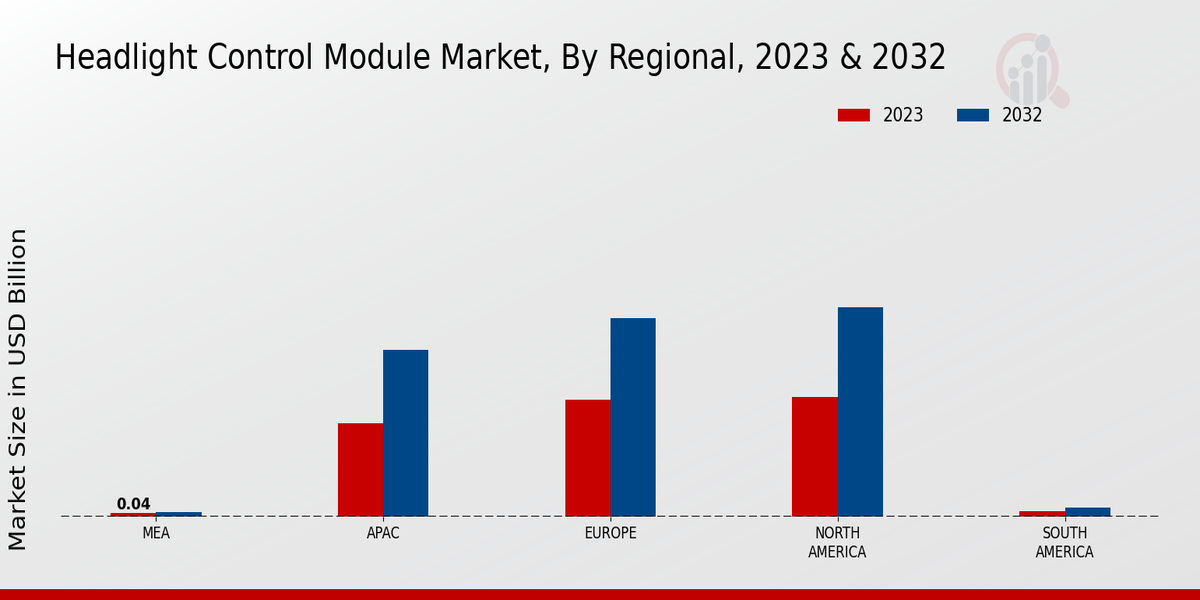Market Growth Projections
Regulatory Standards and Safety Norms
The Global Headlight Control Module Market Industry is significantly influenced by stringent regulatory standards and safety norms imposed by governments worldwide. These regulations often mandate the use of advanced lighting systems to improve road safety and reduce accidents. For example, the introduction of regulations requiring automatic headlight leveling and adaptive lighting systems has propelled manufacturers to innovate and comply with these standards. As a result, the market is expected to grow, reaching 7.89 USD Billion by 2035. Compliance with these regulations not only enhances vehicle safety but also drives the demand for sophisticated headlight control modules.
Increasing Vehicle Production and Sales
The Global Headlight Control Module Market Industry is closely linked to the increasing production and sales of vehicles worldwide. As global automotive production rises, driven by emerging markets and a growing middle class, the demand for headlight control modules is expected to follow suit. In 2024, the market is projected to be valued at 3.87 USD Billion, with a compound annual growth rate of 6.69% anticipated from 2025 to 2035. This growth is indicative of a broader trend where manufacturers are focusing on incorporating advanced lighting technologies into new vehicle models, thereby enhancing the overall driving experience and safety.
Growth of Electric and Autonomous Vehicles
The Global Headlight Control Module Market Industry is poised for growth due to the rising popularity of electric and autonomous vehicles. These vehicles often incorporate advanced lighting technologies that enhance visibility and safety, aligning with the industry's shift towards sustainability and innovation. As electric vehicle production increases, the demand for sophisticated headlight control modules is expected to rise. The market is projected to reach 7.89 USD Billion by 2035, driven by the need for advanced lighting systems that complement the features of autonomous driving. This trend indicates a significant opportunity for manufacturers to innovate and capture market share.
Consumer Demand for Enhanced Safety Features
The Global Headlight Control Module Market Industry is witnessing a shift in consumer preferences towards vehicles equipped with advanced safety features. As awareness of road safety increases, consumers are increasingly seeking vehicles that offer superior visibility and adaptive lighting systems. This trend is reflected in the growing adoption of headlight control modules that provide features such as automatic high-beam control and cornering lights. The market is projected to grow significantly, reaching 3.87 USD Billion in 2024, as manufacturers respond to this demand by integrating advanced lighting technologies into their vehicles, thereby enhancing overall safety.
Technological Advancements in Automotive Lighting
The Global Headlight Control Module Market Industry is experiencing a surge in demand due to rapid technological advancements in automotive lighting systems. Innovations such as adaptive lighting, LED technology, and automatic beam adjustment are enhancing vehicle safety and visibility. For instance, adaptive headlights that adjust based on vehicle speed and steering angle are becoming increasingly common. This shift towards advanced lighting solutions is projected to contribute significantly to the market's growth, with the industry expected to reach 3.87 USD Billion in 2024. As manufacturers integrate these technologies, the market is likely to expand, reflecting a growing consumer preference for enhanced safety features.






















